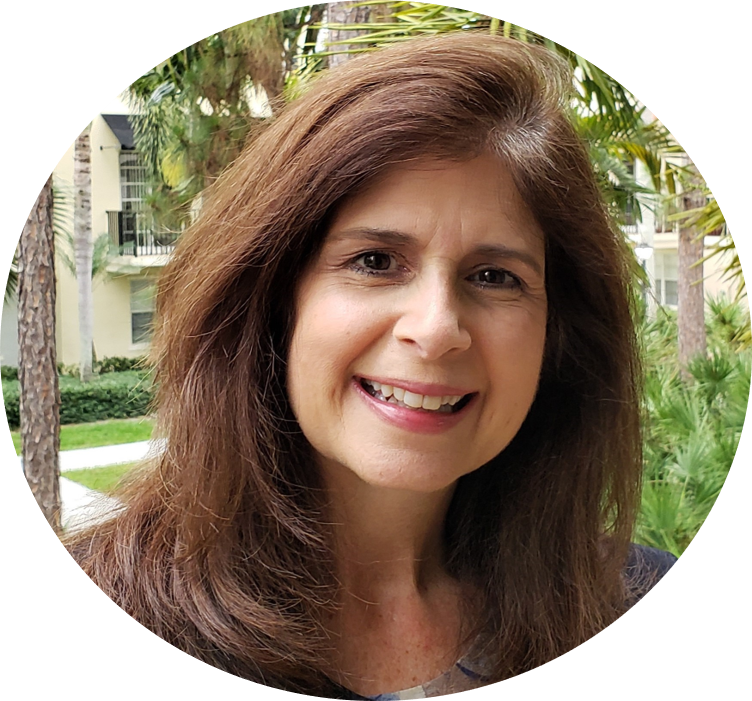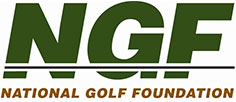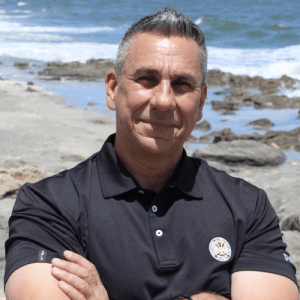Golf’s Social Circle
Ryan Mulvey knew he had to do something different to make sure his golf course remained competitive with the wealth of other things to do for those who both live in and visit Panama City, Florida.
So he flipped on a camera and started recording.
Mulvey, who has been with Bay Point Golf Club in Panama City for nearly three years as its general manager, has become somewhat of a local celebrity since starting a weekly Monday afternoon show on Facebook Live. He and his head golf professional, Colby Pitts, shoot the breeze, engage with local businesses, and of course, promote their golf club, which features a pair of 18-hole courses that wind through scrub oaks, pines and saltwater marshes on the panhandle of Northwest Florida.
Mulvey says the club, minutes from the white sands of Panama City Beach, has grown revenues by over $600,000 in the two years since he started the show (on Halloween 2016). The club has increased rounds-played by 60 percent and tournament business by 400 percent.

Bay Point at the Sheraton Bay Point Resort has two 18-hole courses, including the only Nicklaus design in Northwest Florida.
Bay Point Golf Club’s social media following has jumped almost 10-fold in the past three years. It’s among a growing group of forward-thinking golf facilities that are thriving in the era of social media by creating interesting, topical content that is driving both awareness and revenue.
The NGF’s latest technology study shows the percentage of golfers who prefer social media as their primary touch point with a course or golf business has increased from 9 percent to 21 percent in the past seven years. Among the 18-34 golfer age group, the preference for a social media connection is now 45 percent. It’s a strong indication that a creative social media approach, when combined with effective traditional marketing, can help boost a facility or brand’s visibility and financial bottom line.
Some golf professionals may still consider social media a young person’s “thing,” but consider that 75 percent of Facebook’s users are over the age of 25. Four in 10 people 65 and older in the U.S. use Facebook, a number that’s recently doubled in size. NGF research finds that Facebook is the most popular social network among golfers of all age groups.

“Older golf professionals think Facebook is a young thing but really, it’s not that young a thing. It’s the 35-60 (year old) guys who are using Facebook so much, and that’s a core chunk of our business,” says Mulvey. “You’ve got to be on where that chunk is.”
Mulvey says social media marketing, for him, has replaced most of the other “traditional” forms of marketing outreach. He works with Facebook, for example, to develop paid campaigns that promote goings-on at the club, while using live video content as often as possible, including the weekly show. Mulvey believes paid Facebook advertising offers the best “bang-for-the-buck” when targeting those groups making buying decisions and provides detailed metrics that help show the club’s return on investment.
A show on Facebook Live fits the vibe at Bay Point, as it’s the kind of place that sells Bluetooth speakers, offers GolfBoards to its customers, and hosts Golf Pong and corn hole tournaments. The club also has the only Nicklaus Design course in Northwest Florida. A lot of clubs are missing out because all they do is promote, says Mulvey, who encourages stimulating conversation over trying to sell all the time.
Many golf companies and brands are taking a similarly strategic social media approach in order to connect with consumers.
Take Callaway, which has 1.6 million followers across Facebook, Twitter and Instagram. One of the game’s leading equipment manufacturers, Callaway has invested significant time and effort in differentiating itself in the competitive world of social media.
The company’s strategy is to be “creatively relevant and authentically immersed,” says director of marketing communication and content Scott Goryl.
“We call this the ‘constant engagement strategy,’ and through it Callaway aims to be the most connected brand in golf,” Goryl says. “We’re always listening, responding and interacting with golfers, and although constant engagement can be as exhausting as it sounds, we’ve seen great results by being a consistent and natural part of golfers’ digital consumption habits, especially across social media channels.”
We pulled back the curtain for @WIRED to show how graphene in Chrome Soft is evolving golf ball technology and leading the market in innovation
Full video >> https://t.co/JrssMEBOy7 pic.twitter.com/tsaxE7UmAM
— Callaway Golf (@CallawayGolf) September 10, 2018
Michelle Borthwick is the Director of Marketing at Cabot Links, the famed golf resort in Nova Scotia, Canada, that has been gaining worldwide accolades since it opened in 2011. She says 90 percent of the property’s marketing budget is now spent on digital platforms, including paid campaigns on Facebook. This year, she says, Cabot Links shared significantly more user-generated content than in years past.
“We’re quite happy to let our guests tell our experience to other potential guests as opposed to us telling the story,” she says. “The user generated content… consumers trust it. It’s validation.”
NGF’s recent golf technology research showed that 75 percent of golfers trust online comments from “regular people” (other than writers and industry experts), while 83 percent indicate that good or positive online feedback is at least somewhat likely to influence their purchasing decisions.
Social media has allowed the adage, ‘A picture is worth 1,000 words’ to really shine, says Borthwick. Especially when followers like, comment and extend a post’s reach.
“Some of the pictures our guests have taken and shared through social media channels are amazing,” she explains. “Social media has opened that up exponentially.”
https://www.instagram.com/p/BnperSjlFeI/?taken-by=cabotlinks
Brendan McCarthy, the national director of marketing services at KemperSports, says while content is king, context is just as important when it comes to social media. McCarthy has been with the golf course management company — which counts Bandon Dunes and Streamsong Resort among its clients – since 2009 and has seen an evolution from traditional marketing to a more concerted digital and social approach.
“We live in a world where there is probably too much content,” he says with a laugh. “But you’ve got to make sure you’ve got that consistency in your brand voice. Make sure content is in your brand.”
If the number one thing your customers are interested in is the condition of the golf course, McCarthy says to make sure to show that on social media. If it’s the restaurant experience, showcase that. And if the key differentiation between “you and the club down the street” is customer service, he encourages highlighting that area of strength.
A course like Cabot Links has shone in its social media efforts – the resort regularly gets hundreds of “likes” on its Instagram posts and boasts more than 22,000 people in its Facebook community (plus 9,000 on Twitter and 16,000 on Instagram) – yet it continues to keep an eye on both other golf courses and big brands to see what kind of best practices they can utilize.
“From a marketing perspective the technology is constantly changing, so trying to stay on top of that can be a challenge, especially for a small company with limited resources,” says Borthwick. “We’re always looking to see what’s happening in the marketing world and how we can apply that and what would work for us.”
A live show on Facebook may not work for every golf course, but it’s indeed been a point of differentiation for Bay Point. And in a town where there are a lot of ways to fill free time besides golf, it’s rewarding for the club’s operators to know a golf course can be a leader in the social space.
“We’re not just competing against other golf courses, we’re competing against other activities that people do in Panama City beach. We wanted to make it fun. We’re creating all this brand loyalty and top-of-mind awareness about Bay Point Golf Club. People know the show. They’ve seen it and it gets shared a lot.” says Mulvey.
“Maybe they’re not golf customers who watch it, but they sure as hell know somebody who plays golf and they’ll say, ‘those guys in Bay Point are awesome. You have to go play there.’”
Short Game.
"*" indicates required fields
How can we help?
NGF Membership Concierge

"Moe"
Learn From NGF Members
 Ship Sticks Secrets to a Hassle-Free Buddies Golf Trip
Ship Sticks Secrets to a Hassle-Free Buddies Golf Trip
Whether you’re the head planner of your upcoming buddies golf trip or simply along for the ride, we’ve gathered a few easy ways to keep everyone in your group happy.
Read More... Golf Course Turf, Soil and Water Quality Diagnostic Testing
Golf Course Turf, Soil and Water Quality Diagnostic Testing
As humans, we see our primary care physician on a regular basis to proactively evaluate our vital signs. Likewise, a superintendent should perform frequent diagnostic testing on their golf course.
Read More... Unlocking Distance: Launch Conditions and Angle of Attack
Unlocking Distance: Launch Conditions and Angle of Attack
We’ve long known that higher launch and lower spin is a powerful combination for generating consistently long and straight tee shots. A key factor in optimizing launch conditions, one often overlooked, is ...
Read More...





